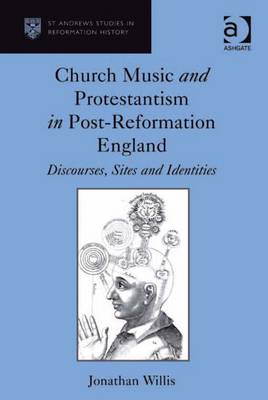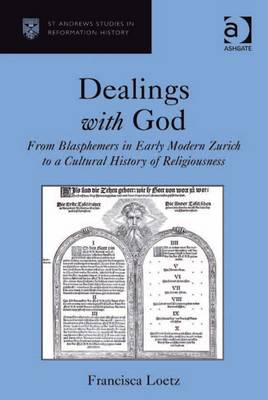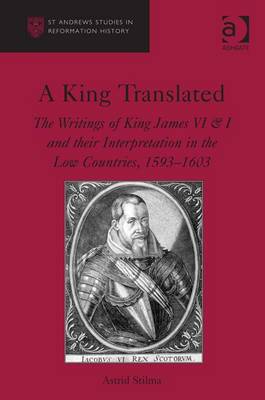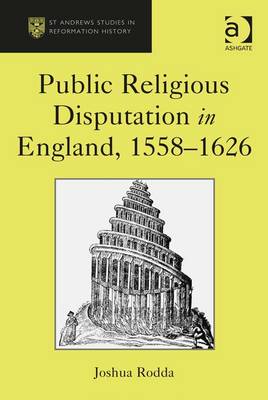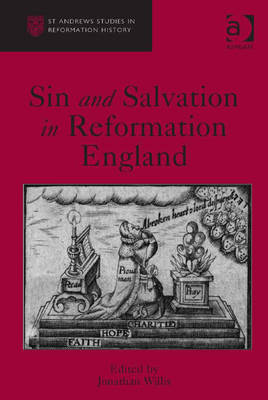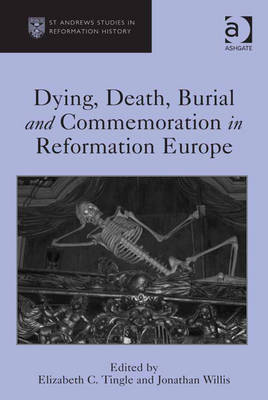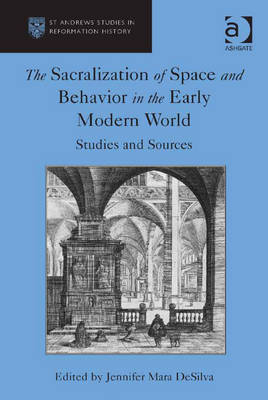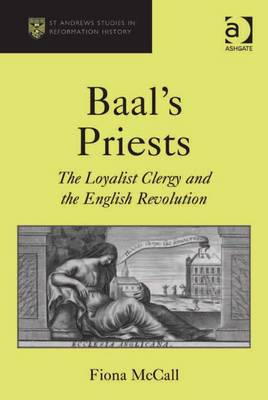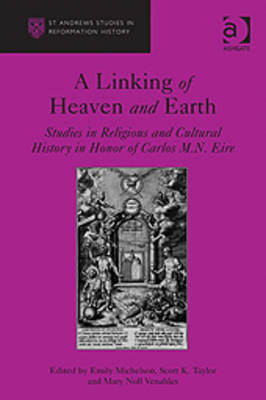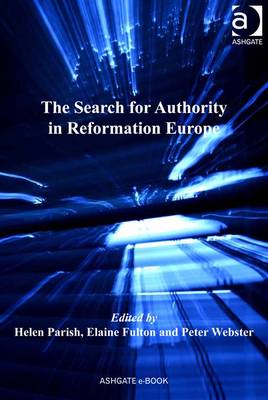St Andrews Studies in Reformation History
31 total works
Church Music and Protestantism in Post-Reformation England
by Dr. Jonathan Willis
'Church Music and Protestantism in Post-Reformation England' breaks new ground in the religious history of Elizabethan England, through a closely focused study of the relationship between the practice of religious music and the complex process of Protestant identity formation. Hearing was of vital importance in the early modern period, and music was one of the most prominent, powerful and emotive elements of religious worship. But in large part, traditional historical narratives of the English Reformation have been distinctly tone deaf. Recent scholarship has begun to take increasing notice of some elements of Reformed musical practice, such as the congregational singing of psalms in meter. This book marks a significant advance in that area, combining an understanding of theory as expressed in contemporary religious and musical discourse, with a detailed study of the practice of church music in key sites of religious worship.
Divided into three sections - 'Discourses', 'Sites', and 'Identities' - the book begins with an exploration of the classical and religious discourses which underpinned sixteenth-century understandings of music, and its use in religious worship. It then moves on to an investigation of the actual practice of church music in parish and cathedral churches, before shifting its attention to the people of Elizabethan England, and the ways in which music both served and shaped the difficult process of Protestantisation.
Through an exploration of these issues, and by reintegrating music back into the Elizabethan church, we gain an expanded and enriched understanding of the complex evolution of religious identities, and of what it actually meant to be Protestant in post-Reformation England.
Dealings with God
Early modern European society took a serious view of blasphemy, and drew upon a wide range of sanctions - including the death penalty - to punish those who cursed, swore and abused God. Whilst such attitudes may appear draconian today, this study makes clear that in the past, blasphemy was regarded as a very real threat to society. Based on a wealth of primary sources, including court records, theological and ecclesiastical writings and official city statutes, Francisca Loetz explores verbal forms of blasphemy and the variety of contexts within which it could occur. Honour conflicts, theological disputation, social and political provocation, and religious self-questioning all proved fertile ground for accusations of blasphemy, and her contention - that blasphemers often meant more than they said - reveals the underlying complexity of an apparently simple concept.
This innovative approach interprets cases of verbal blasphemy as 'speech actions' that reflect broader political, social and religious concerns. Cases in Protestant Zurich are compared with the situation in Catholic Lucerne and related to findings in other parts of Europe (Germany, France, England, Italy) to provide a thorough discussion of different historical approaches to blasphemy - ecclesiastical, legal, intellectual, social, and cultural - in the Early Modern period. In so doing the book offers intriguing suggestions about what a cultural history of religiousness could and should be.
By linking a broad overview of the issue of blasphemy, with case studies from Zurich and Lucerne, this book provides a fascinating insight into a crucial, but often misunderstood aspect of early-modern society. The conclusions reached not only offer a much fuller understanding of the situation in Zurich, but also have resonance for all historians of Reformation Europe.
A King Translated
King James is well known as the most prolific writer of all the Stuart monarchs, publishing works on numerous topics and issues. These works were widely read, not only in Scotland and England but also on the Continent, where they appeared in several translations. In this book, Dr Stilma looks both at the domestic and international context to James's writings, using as a case study a set of Dutch translations which includes his religious meditations, his epic poem The Battle of Lepanto, his treatise on witchcraft Daemonologie and his manual on kingship Basilikon Doron.
The book provides an examination of James's writings within their original Scottish context, particularly their political implications and their role in his management of his religio-political reputation both at home and abroad. The second half of each chapter is concerned with contemporary interpretations of these works by James's readers. The Dutch translations are presented as a case study of an ultra-protestant and anti-Spanish reading from which James emerges as a potential leader of protestant Europe; a reputation he initially courted, then distanced himself from after his accession to the English throne in 1603.
In so doing this book greatly adds to our appreciation of James as an author, providing an exploration of his works as politically expedient statements, which were sometimes ambiguous enough to allow diverging - and occasionally unwelcome - interpretations. It is one of the few studies of James to offer a sustained critical reading of these texts, together with an exploration of the national and international context in which they were published and read. As such this book contributes to the understanding not only of James's works as political tools, but also of the preoccupations of publishers and translators, and the interpretative spaces in the works they were making available to an international audience.
Public Religious Disputation in England, 1558-1626
With a focus on England from the accession of Elizabeth I to the mid-1620s, this book examines the practice of direct, scholarly disputation between fundamentally opposing and oftentimes antagonistic Catholic, Protestant and nonconformist puritan divines. Introducing a form of discourse hitherto neglected in studies of religious controversy, the volume works to rehabilitate a body of material only previously examined as part of the great, subjective mass of polemic produced in the wake of the Reformation. In so doing, it argues that public religious disputation - debate between opposing clergymen, arranged according to strict academic formulae - can offer new insights into contemporary beliefs, thought processes and conceptions of religious identity, as well as an accessible and dramatic window into the major theological controversies of the age.
Formal disputation crossed confessional lines, and here provides an opportunity for a broad, comparative analysis. More than any other type of interaction or material, these encounters - and the dialogic accounts they produced - displayed the shared methods underpinning religious divisions, allowing Catholic and reformed clergymen to meet on the same field. The present volume asserts the significance of public religious disputation (and accounts thereof) in this regard, and explores their use of formal logic, academic procedure and recorded dialogue form to bolster religious controversy. In this, it further demonstrates how we might begin to move from the surviving source material for these encounters to the events themselves, and how the disputations then offer a remarkable new glimpse into the construction, rationalization and expression of post-Reformation religious argument.
Sin and Salvation in Reformation England
Notions of which behaviours comprised sin, and what actions might lead to salvation, sat at the heart of Christian belief and practice in early modern England, but both of these vitally important concepts were fundamentally reconfigured by the reformation. Remarkably little work has been undertaken exploring the ways in which these essential ideas were transformed by the religious changes of the sixteenth-century. In the field of reformation studies, revisionist scholarship has underlined the vitality of late-medieval English Christianity and the degree to which people remained committed to the practices of the Catholic Church up to the eve of the reformation, including those dealing with the mortification of sin and the promise of salvation. Such popular commitment to late-medieval lay piety has in turn raised questions about how the reformation itself was able to take root. Whilst post-revisionist scholars have explored a wide range of religious beliefs and practices - such as death, providence, angels, and music - there has been a surprising lack of engagement with the two central religious preoccupations of the vast majority of people. To address this omission, this collection focusses upon the history and theology of sin and salvation in reformation and post-reformation England. Exploring their complex social and cultural constructions, it underlines how sin and salvation were not only great religious constants, but also constantly evolving in order to survive in the rapidly transforming religious landscape of the reformation. Drawing upon a range of disciplinary perspectives - historical, theological, literary, and material/art-historical - to both reveal and explain the complexity of the concepts of sin and salvation, the volume further illuminates a subject central to the nature and success of the Reformation itself.
Divided into four sections, Part I explores reformers' attempts to define and re-define the theological concepts of sin and salvation, while Part II looks at some of the ways in which sin and salvation were contested: through confessional conflict, polemic, poetry and martyrology. Part III focuses on the practical attempts of English divines to reform sin with respect to key religious practices, while Part IV explores the significance of sin and salvation in the lived experience of both clergy and laity. Evenly balancing contributions by established academics in the field with cutting-edge contributions from junior researchers, this collection breaks new ground, in what one historian of the period has referred to as the `social history of theology'.
Dying, Death, Burial and Commemoration in Reformation Europe
In recent years, the rituals and beliefs associated with the end of life and the commemoration of the dead have increasingly been identified as of critical importance in understanding the social and cultural impact of the Reformation. The associated processes of dying, death and burial inevitably generated heightened emotion and a strong concern for religious propriety: the ways in which funerary customs were accepted, rejected, modified and contested can therefore grant us a powerful insight into the religious and social mindset of individuals, communities, Churches and even nation states in the post-reformation period.
This collection provides an historiographical overview of recent work on dying, death and burial in Reformation and Counter-Reformation Europe and draws together ten essays from historians, literary scholars, musicologists and others working at the cutting edge of research in this area. As well as an interdisciplinary perspective, it also offers a broad geographical and confessional context, ranging across Catholic and Protestant Europe, from Scotland, England and the Holy Roman Empire to France, Spain and Ireland.
The essays update and augment the body of literature on dying, death and disposal with recent case studies, pointing to future directions in the field. The volume is organised so that its contents move dynamically across the rites of passage, from dying to death, burial and the afterlife. The importance of spiritual care and preparation of the dying is one theme that emerges from this work, extending our knowledge of Catholic ars moriendi into Protestant Britain. Mourning and commemoration; the fate of the soul and its post-mortem management; the political uses of the dead and their resting places, emerge as further prominent themes in this new research. Providing contrasts and comparisons across different European regions and across Catholic and Protestant regions, the collection contributes to and extends the existing literature on this important historiographical theme.
The Sacralization of Space and Behavior in the Early Modern World
In the Early Modern period - as both reformed and Catholic churches strove to articulate orthodox belief and conduct through texts, sermons, rituals, and images - communities grappled frequently with the connection between sacred space and behavior. The Sacralization of Space and Behavior in the Early Modern World explores individual and community involvement in the approbation, reconfiguration and regulation of sacred spaces and the behavior (both animal and human) within them. The individual's understanding of sacred space, and consequently the behavior appropriate within it, depended on local need, group dynamics, and the dissemination of normative expectations. While these expectations were defined in a growing body of confessionalizing literature, locally and internationally traditional clerical authorities found their decisions contested, circumvented, or elaborated in order to make room for other stakeholders' activities and needs. To clearly reveal the efforts of early modern groups to negotiate authority and the transformation of behavior with sacred space, this collection presents examples that allow the deconstruction of these tensions and the exploration of the resulting campaigns within sacred space.
Based on new archival research the eleven chapters in this collection examine diverse aspects of the campaigns to transform Christian behavior within a variety of types of sacred space and through a spectrum of media. These essays give voice to the arguments, exhortations, and accusations that surrounded the activities taking place in early modern sacred space and reveal much about how people made sense of these transformations.
Baal's Priests
The English Civil War was a time of disruption, suffering and persecution for many people, not least the clergy of the established church, who found themselves ejected from their livings in increasing numbers as Parliamentarian forces extended their control across the country. Yet, historians have tended to downplay their suffering, preferring in most cases to concentrate instead upon the persecution suffered by dissenters after the Restoration. Drawing upon an impressive array of sources - most notably the remarkable set of family and parish memories collected by John Walker in the early years of the eighteenth century - this book refocuses attention on the experiences of the sequestered loyalist clergy during the turbulent years of the 1640s and 1650s.
The study highlights how the experiences of the clergy can help illuminate events in wider society, whilst at the same time acknowledging the unique situation in which Church of England ministers found themselves. For although the plundering, imprisonment and personal loss of the clergy was probably indicative of the experiences of many ordinary people on middle incomes, the ever present religious dimension to the conflict ensured particular attention was paid to those holding religious office. During the war and interregnum, zealous religious reformers attacked every aspect of established religion, targeting both existing institutions and those who supported them. Clergy were ejected on an unprecedented scale, suffering much violence and persecution and branded as 'malignants' and 'baal's priests'. By re-examining their history, the book offers a balanced assessment of the persecution, challenging many preconceptions about the ejected loyalists, and providing new insights into the experiences and legacies of this influential group.
Satan and the Scots
Frequent discussions of Satan from the pulpit, in the courtroom, in print, in self-writings and on the streets rendered the Devil an immediate and assumed presence in early modern Scotland. For some, especially those engaged in political struggle, this produced a unifying effect by providing a proximate enemy for communities to rally around. For others, the Reformed Protestant emphasis on the relationship between sin and Satan caused them to suspect, much to their horror, that their own depraved hearts placed them in league with the Devil. Exploring what it meant to live in a world in which Satan's presence was believed to be, and indeed, perceived to be, ubiquitous, this book recreates the role of the Devil in the mental worlds of the Scottish people from the Reformation through the early eighteenth century. In so doing it is both the first history of the Devil in Scotland and a case study of the profound ways that beliefs about evil can change lives and shape whole societies.
Building upon recent scholarship on demonology and witchcraft, this study contributes to and advances this body of literature in three important ways. First, it moves beyond establishing what people believed about the Devil to explore what these beliefs actually did- how they shaped the piety, politics, lived experiences and identities of Scots from across the social spectrum. Second, while many previous studies of the Devil remain confined to national borders, this project situates Scottish demonic belief within the confluence of British, Atlantic and European religious thought. Third, this book engages with long-running debates about Protestantism and the `disenchantment of the world', suggesting that Reformed theology, through its dogged emphasis on human depravity, eroded any rigid divide between the supernatural evil of Satan and the natural wickedness of men and women. This erosion was borne out not only in pages of treatises and sermons, but in the lives of Scots of all sorts. Ultimately, this study suggests that post-Reformation beliefs about the Devil profoundly influenced the experiences and identities of the Scottish people through the creation of a shared cultural conversation about evil and human nature.
A Linking of Heaven and Earth
The Reformation of the sixteenth century shattered the unity of medieval Christendom, and the resulting fissures spread to the corners of the earth. No scholar of the period has done more than Carlos M.N. Eire, however, to document how much these ruptures implicated otherworldly spheres as well. His deeply innovative publications helped shape new fields of study, intertwining social, intellectual, cultural, and religious history to reveal how, lived beliefs had real and profound implications for social and political life in early modern Europe.
Reflecting these themes, the volume celebrates the intellectual legacy of Carlos Eire's scholarship, applying his distinctive combination of cultural and religious history to new areas and topics. In so doing it underlines the extent to which the relationship between the natural and the supernatural in the early modern world was dynamic, contentious, and always urgent. Organized around three sections - 'Connecting the Natural and the Supernatural', 'Bodies in Motion: Mind, Soul, and Death' and 'Living One's Faith' - the essays are bound together by the example of Eire's scholarship, ensuring a coherence of approach that makes the book crucial reading for scholars of the Reformation, Christianity and early modern cultural history.
The Search for Authority in Reformation Europe
The 'problem of authority' was not an invention of the Protestant Reformation, but, as the essays contained in this volume demonstrate, its discussion, in ever greater complexity, was one of the ramifications (if not causes) of the deepening divisions within the Christian church in the sixteenth century. Any optimism that the principle of sola scriptura might provide a vehicle for unity and concord in the post-Reformation church was soon to be dented by a growing uncertainty and division, evident even in early evangelical writing and preaching.
Representing a new approach to an important subject this volume of essays widens the understanding and interpretation of authority in the debates of the Reformation. The fruits of original and recent research, each essay builds with careful scholarship on solid historiographical foundations, ensuring that the content and ultimate conclusions do much to challenge long-standing assumptions about perceptions of authority in the aftermath of the Reformation. Rather than dealing with individual sources of authority in isolation, the volume examines the juxtapositions of and negotiations between elements of the authoritative synthesis, and thereby throws new light on the nature of authority in early-modern Europe as a whole. This volume is thus an ideal vehicle with which to bring high quality, new, and significant research into the public domain for the first time, whilst adding substantially to the existing corpus of Reformation scholarship.
